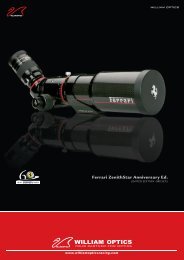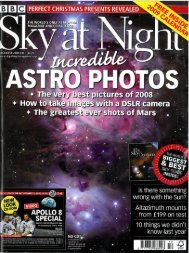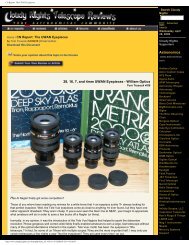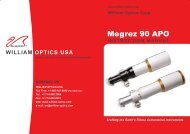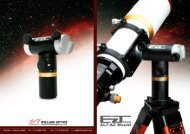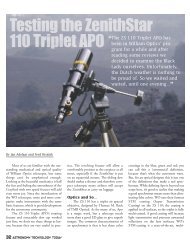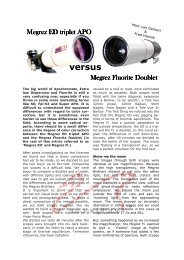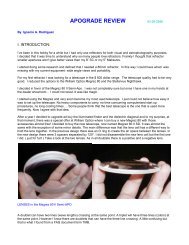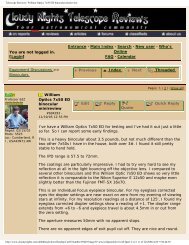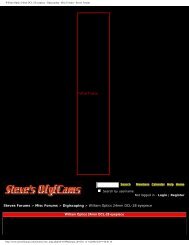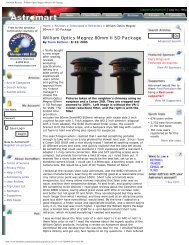WO Gran Turismo 81mm Reviews(PDF File) - William Optics
WO Gran Turismo 81mm Reviews(PDF File) - William Optics
WO Gran Turismo 81mm Reviews(PDF File) - William Optics
Create successful ePaper yourself
Turn your PDF publications into a flip-book with our unique Google optimized e-Paper software.
THE WILLIAM OPTICS GRAN TURISMO 81-MM REFRACTORS<br />
Image 4 - The globular star cluster M3 in Canes Venatici. The brightest<br />
star in the image is SAO 82944, magnitude 6.2. This 15-minute exposure<br />
captures stars down to magnitude 15.5.<br />
Image 5 - Globular star cluster Omega Centauri, NGC5139. This cluster is<br />
57 arcminutes in diameter.<br />
wider fields of view than larger instruments,<br />
but it is still capable ofresolving<br />
many deep-space objects.<br />
My first image with the GTF81 was<br />
of the nearly full moon (Image 3). Since<br />
the Moon is one-halfdegree in diameter,<br />
this image provides a good measure ofthe<br />
field of view with my CCD camera. Notice<br />
the sharpness ofthe image! Also, this<br />
is a color image. With proper color correction<br />
expected from an Apo, the Moon<br />
should not display any colors, especially<br />
around the edges.<br />
My next image taken with the GTF81<br />
was a 15-minute exposure ofthe globular<br />
cluster, M3, when it was high overhead<br />
(Image 4). The telescope does an excellent<br />
job resolving the stars in the cluster, and<br />
all stars are pinpoint to the edge ofthe<br />
image. This confirmed what I saw visually.<br />
On the right side of the image, halfway<br />
down from the top is the 14th magnitude<br />
spiral galaxy NGC5263 which measures a<br />
mere 1.1 by 0.4 arc minutes in size!<br />
A difficult object to image from the<br />
northern hemisphere is NGC5139,<br />
Omega Centauri, the largest globular<br />
cluster visible from Earth. I was able to<br />
capture Omega Centauri with the<br />
GTF81 from Hawaii when it was only 20<br />
degrees above the horizon (Image 5).<br />
The seeing was 2-3 arc seconds and the<br />
exposure was 20 minutes. The <strong>Gran</strong><br />
Tursimo 81 readily resolves an uncount-<br />
40 Astronomy TECHNOLOGY TODAY




